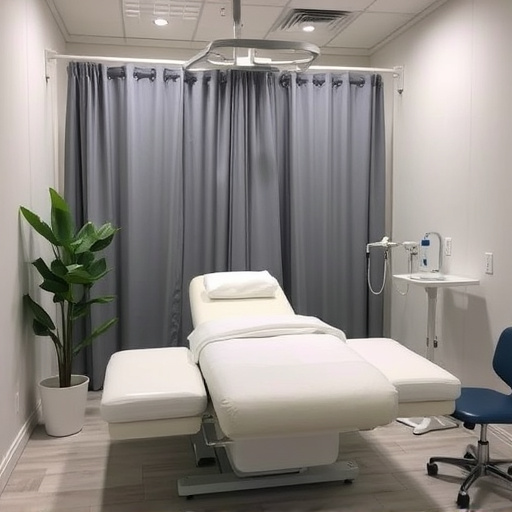Turbo noise amplification distinguishes turbocharged engines from their naturally aspirated counterparts, with high-performance intakes creating an aggressive and distinctive intake noise. This occurs due to the interaction of turbocharger compression, exhaust gases, and engine acoustic properties, resulting in higher frequency sound waves during combustion. Two contrasting turbo noise profiles exist: aggressive, catering to thrill-seekers, and subtle, appealing to drivers prioritizing comfort without compromising performance. Each sound enhances overall vehicle performance and driver engagement, from track intensity to daily driving comfort.
“Unleash the power of your engine while exploring the captivating world of turbo noise amplification. This article delves into the science behind this distinctive sound, revealing its origins in performance intake systems. We analyze how different intake designs impact noise levels, highlighting the dramatic contrast between aggressive and subtle turbo sounds. Discover the implications of these variations on both driving experience and vehicle customization. Get ready to explore a new dimension of automotive allure.”
- Understanding Turbo Noise Amplification: The Science Behind the Sound
- Performance Intake and Its Impact on Turbo Noise: A Comprehensive Analysis
- Aggressive vs. Subtle: Exploring Different Turbo Sound Differences and Their Implications
Understanding Turbo Noise Amplification: The Science Behind the Sound

Turbo noise amplification, a fascinating phenomenon in automotive engineering, refers to the enhanced and often distinctive sound produced by turbocharged engines compared to their naturally aspirated counterparts. This effect is particularly noticeable in vehicles with high-performance intake systems designed to optimize airflow and power output. The science behind it lies in the complex interaction between the turbocharger’s compressor, exhaust gases, and the engine’s unique acoustic properties.
When a turbocharged engine operates, the forced induction of air through the performance intake system increases the pressure within the combustion chamber, resulting in a more powerful explosion. This rapid expansion generates higher frequencies and intensifies the sound waves produced during each combustion cycle. The turbocharger itself also contributes to the noise by acting as a mechanical amplifier, further enhancing these sounds and creating a distinct, often aggressive, intake noise that many car enthusiasts appreciate.
Performance Intake and Its Impact on Turbo Noise: A Comprehensive Analysis

Performance intake systems are designed to enhance engine performance by improving airflow and density, but they can also significantly impact turbo noise. When a high-flow intake is installed, it creates an aggressive sound signature due to increased air velocity and turbulence within the system. This amplified sound is particularly noticeable during acceleration or under heavy load when the turbocharger is at its peak efficiency.
The design of a performance intake plays a crucial role in this process. Wider and more direct air paths, often featuring ram-air designs or large-diameter pipes, can intensify the turbo’s howl. Additionally, the use of acoustic treatments in some high-performance intakes aims to mitigate noise levels while maintaining the desired sound difference that enthusiasts appreciate. This balance between performance gains and noise amplification is a key consideration for manufacturers and users alike.
Aggressive vs. Subtle: Exploring Different Turbo Sound Differences and Their Implications

In the realm of automotive modifications, the discussion around turbo noise often centers on a fundamental dichotomy: aggressive versus subtle. The performance intake sound difference is striking, with each extreme offering distinct experiences for car enthusiasts. Aggressive turbo sounds are characterized by their raw, powerful tone, reminiscent of a growl or roar, typically generated by larger turbines and tailored to thrill drivers seeking an intense driving sensation. On the other hand, subtle turbo noises are more refined and discreet, often resembling a gentle hum or whisper, achievable through meticulous engineering for those who prefer a quieter yet still noticeable performance boost.
These contrasting sounds have significant implications beyond aesthetic appeal. Aggressive turbo noise can enhance the overall driving experience, making power delivery more tangible and exciting. Conversely, subtle sounds allow for a smoother integration of forced induction, ensuring the turbo’s presence is felt without dominating the cockpit atmosphere. Thus, the choice between aggressive and subtle turbo noises depends on personal preference, with each option catering to different driving styles and desires, from track-focused intensity to everyday comfort.
Turbo noise amplification, driven by performance intake systems, offers a unique auditory experience with distinct sound differences. Understanding the science behind turbo noise and its varying intensities—from subtle to aggressive—enables car enthusiasts to appreciate the dynamic nature of modern automotive engineering. The balance between enhancing power and creating desirable sound profiles is a delicate one, with implications for both driver enjoyment and regulatory compliance. Ultimately, the evolution of turbo technology continues to shape the soundscape of high-performance vehicles.














